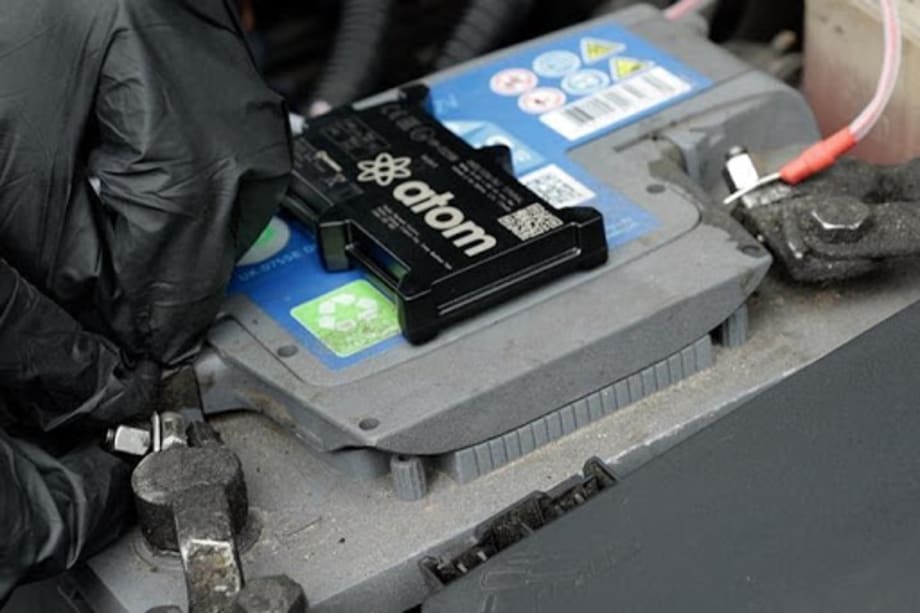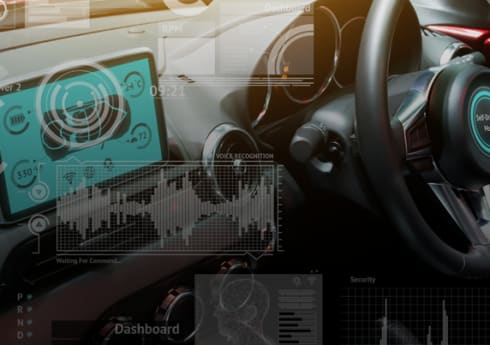What is a Telematics Device?
- Improve your odds of getting your vehicle back if it gets stolen
- Easy, quick and affordable to install
- Compare self-install and professional install devices

What is a telematics device?
A telematics device is a piece of equipment that can be installed into a vehicle. These devices are often provided by employers or by insurance providers enable vehicle tracking. Telematics devices are sometimes called a “black box” because of their appearance.
What is self-install telematics?
Self-install telematics devices can be installed with no professional assistance required. The provider usually gives installation instructions via a video or instruction manual.
For professionally installed trackers, a professional installer will be sent to your vehicle. This may require you to book an appointment and wait for the trackers to be installed.
What can a telematics device track
What the device can track does depend on the tracker and its features. In general, most devices can track the live location of a vehicle using GPS. This shows you the location of your vehicle from your phone, tablet or desktop on a live map.
Trackers can also collect information on your mileage, when you brake, speeding and more. Devices are used by all vehicle types, the most common being car tracking.
How much a self-install telematics device costs
Most telematics devices have an initial set-up fee, then a small monthly subscription to use the telematics software and see your tracking data.
Many self-install vehicle tracking systems can cost less than €100 to get started and just a few euros a month to use. When choosing your self-install device, here are the main costs to look out for:
- Installation costs: this is usually priced into the setup fee rather than an extra, but double-check before you buy
- Subscription cost: depending on the provider, this can be a monthly or yearly fee
- Cost of cancellation: you may have a cancellation fee on your contract. Monthly plans are less likely to have fees for cancelling
The subscription cost is the one you need to watch. A vehicle tracker is useless without its software. Make sure you’re getting your money’s worth in a quality telematics system.
The cost of the software is often scaled based on how many features the tracker has and how much information it can give you. The more information, the higher the cost.
How to install a telematics device
It only takes a few minutes to install most self-install devices. The provider should send a video tutorial or an instruction manual to help you. Most self-install telematics boxes require little to no technical knowledge to install.
How to install a telematics device does depend on the type you have. Most are installed by going to the vehicle battery, where there are two wires to connect it for power. The device then sticks onto the battery to avoid slipping.
Benefits of a self-install telematics device
Self-install devices can help you get your vehicle back if it’s stolen, help your vehicle management and save money right now.
1. Improved odds of vehicle recovery
Vehicle theft is one the rise, but you don’t have to be totally defenceless against it. Telematics devices work as vehicle trackers that can show your vehicles live location on map – you can even see it on your phone.
Some devices include geofence and location alert features. If your vehicle leaves your neighbourhood at night, then you know something’s up and can alert the police right away.
Telematics devices aren’t fool proof. They can be removed, but if you get a small tracker, it can be tricker for the thief to get it out. Opportunistic thieves are even less likely to spot them. These devices also have alerts that let you know if they are removed, so either way you’re on the case much faster than most.
At the very least, your odds of getting your vehicle back are much higher with a device installed than without.
2. Set up geofences and stay in the know
A geofence is a line drawn around an area on a map. The area can be as big or small as you make it from a circle around your local pub to your neighbourhood.
When a vehicle enters or leaves the geofenced area, an alert is sent via app or email to your account. It makes it a lot easier to manage fleet tracking without staring at a screen for hours!
3. Save money on installation costs
Self-installing is a faster and often cheaper way to get telematics than professional installation. It’s a D-I-Y job. That means no waiting around for an installation appointment, no extra costs to pay them and a cheaper subscription fee overall. This can save your business a significant amount right away and overtime.
When you should get a self-install telematics device
We recommend a self-install telematics tracker for all small businesses and sole traders as the features are just the right fit at an affordable cost.
A device you install yourself may also be a great option if you’re unfamiliar with telematics and want to give it a trial run before delving into the telematics device cost for a large fleet.
Are professionally installed trackers better than self-installing?
The top three reasons to professionally install instead of getting a self-install telematics device are to reduce your insurance costs, get detailed reports and to save money on fuel.
1. Telematics devices can reduce insurance costs
Insurance-approved devices are more likely to require professional installation, so the insurer gets the most information possible about driving performance and safety. This is especially the case for fleets and HGV tracking.
Factors insurers keep an eye on from the device include whether you drive at night or only in the daytime; whether drivers mostly use motorways or often travel on small roads; and the driver’s safety score from the in-vehicle monitoring system (IVMS).
You might get a slightly lower quote for self-install devices, but it’s worth checking with your insurance provider if a professionally installed device could give you more savings overtime.
2. Get detailed reports
Managers tend to prefer professionally installed devices. They might cost more initially but can unlock greater savings over time as they reveal driving habits and potential route savings. Most of the fleet tracking devices include a reporting system.
3. Saving money on fuel is a priority
If your drivers are on the roads full-time, or if you operate large vans that consume a lot of diesel, it makes sense to ensure they are driven economically. Cutting your fuel costs can be a big money-saving, especially for fleets. Self-install devices can’t do a lot to help you here.
If you want to reduce fuel consumption by monitoring which drivers are wasteful a self-install tracker will not help. But a professionally installed device gives you the details you need to kick bad habits to the curb.
Did you know you can save a whole tank of fuel every month with just one change? All you have to do is have your drivers turn off the engine when they stop. Idling is one of the biggest fuel wasters! Anything longer than ten seconds stationary, and it saves fuel to turn off and then restart.
Should I get a professionally installed tracker?
Professionally installed trackers usually have more features to track driver performance and vehicle diagnostics. If you have a fleet of vehicles, professionally installed trackers are a better choice.
The best reasons to get a professionally installed tracker are:
- Professional telematics devices also include an accelerometer most of the time for highly accurate vehicle tracking
- Detailed driver reports. Self-installed devices can only get so much information, but professionally installed devices are capable of highly detailed feedback and reporting systems
How to get self-install telematics devices
The best way to find a telematics device for your business is to compare them. We’ll narrow down your options and give you all the details you need to choose your device. We can help you decide whether a self-install or professional tracker is right for your business.
To get up-to-date prices for either option, you can enter your details in a quick form and get a quote from iCompario.


